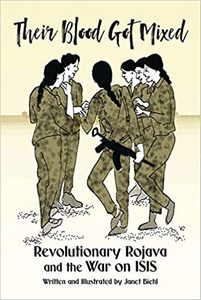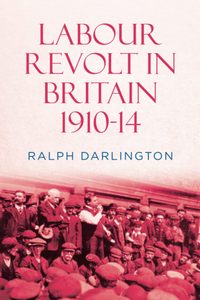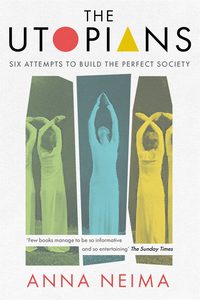Book reviews – Biehl, Darlington, Neima
 Graphic Novel
Graphic Novel
Their Blood Got Mixed. Revolutionary Rojava and the War on ISIS. By Janet Biehl. PM Press. 2022. 246pp.
‘Rojava’ (the Kurdish for ‘West’) is the name given by Kurdish nationalists to an area of Northeast Syria largely inhabited by Kurds but also home to Arabs and Assyrian Christians. It is the western part of their aimed-at state of Kurdistan, incorporating areas from Iran in the east, through Iraq and Turkey to Syria in the west, where the majority population is Kurdish-speaking. It is a de facto independent region of Syria, always threatened but not controlled by Turkey and the Syrian government. Currently it is controlled by the PKK (Kurdish Workers Party), a vanguard party led by Abdullah Ocalan.
In prison in Turkey (where he still is) Ocalan read and was impressed by the ‘communitarian’ ideas of American social theorist, Murray Bookchin. Bookchin, who was also the long-term partner of Janet Biehl, the author of this book, developed the idea that the basic unit of society should be a decentralised, face-to-face participatory democracy, which he called ‘municipalism’, practising ‘community support and solidarity’ as opposed to the way ‘capitalism has organised society for competition and manipulation’. The PKK adopted this policy for local decision-making while keeping a firm hand on major political decisions and its militia.
Biehl explains, in a chapter entitled ‘Why I’m Here’, how she first visited the region in 2014 and was attracted to it by its claim to be putting into practice Bookchin’s ‘communitarian’ vision. She carried on visiting the region, most recently in 2019, and it is on her personal experiences and knowledge of the region that she gained over her visits that much of this book is based.
The system of district and local councils there is often held up as a model of democratic co-operative organisation by those seeking an alternative both to authoritarian centralised rule and capitalist democracies of one kind or another. The region has since been subject to aggression, sometimes savage, as by Islamic State forces, and by the Turkish military, who have effectively taken over part of the region spreading death and destruction. Despite this, it survives as a kind of communitarian experiment, but constantly teetering on the edge and, as someone has put it, ‘trapped within a spider web of competing Great Powers and local powers’.
Biehl has made a brave effort to make sense of this by producing what is termed a graphic novel (though it is not a novel in the normal sense of fiction or imagined reality) which seeks to represent, in art work, commentary and ‘word bubbles’, the history, social organisation and way of living of the multi-ethnic groups that co-exist and intermingle (hence the sub-title ‘Their Blood Got Mixed’) in this small border area. She does this in a way that displays her admiration for these people while at the same time not being afraid to show the downsides, often bloody, of the path they have taken. A selection of the titles of the 15 chapters into which the book is divided gives an idea of the areas she covers: Islamic State, A Place of Refugees, Women and Men, Economics, Security, Social Ecology, Democracy, Self-Administration.
Her book illustrates both some of the most disturbing things that have happened to the people of the region, part of which she refers to as ‘the long tortured history of Kurds in the Middle East’. But she also describes, with obvious enthusiasm, some of the most positive and optimistic sides of what she considers they have established. So while, for example, on the one hand a piece of her graphic art pictures an ISIS soldier saying ‘The Koran says it’s permitted to take non-Muslim women and girls captive and rape them’, on the other she vividly brings out the joy experienced by the city of Raqqa at being liberated from the terror of the IS caliphate. She also details the suffering of the region’s people when the Turkish army invaded parts of it in 2018 but at the same time waxes rather lyrical about its system of citizens’ assemblies, committees and regional councils and extols Ocalan’s call for ‘gender equality, a cooperative economy, and ethnic and religious inclusiveness’. Yet even the positive side is complex and she is at pains not to portray it without flaws. She expresses a certain degree of doubt about the claim she hears that ‘our revolution is ecological, stateless and of women’, and it is not hard for the reader to join with her in questioning this given that without exception the women we see in her pictures are wearing hijabs, refer to those who’ve died in the fighting there as ‘martyrs’ and seem steeped in religious belief. She also wonders about the reality of the claims that ‘leadership here gets no special treatment … everyone is a link in the chain’, and recognises that the Bookchin model of a decentralised ‘face-to-face democracy’ and ‘an ecological society based on non-hierarchical relations’ may not be being followed as closely as she would like it to be.
A socialist would add that society in the region continues to use a money economy, markets (even though called ‘cooperative markets’) and buying and selling, which are the very essence of the wider capitalist system, and so does not merit the title ‘revolutionary’. So even if the author sees it as a kind of haven attempting to practice ‘communitarian’ principles, it is nevertheless trapped within the capitalist system and forced to rely on ‘protection’ from outside by coercive state regimes at war with one another. Like all other attempts to ‘go it alone’ in the capitalist world, its survival is perilous to say the least.
Small-scale attempts at establishing anything even slightly different (eg, the abolition of money and trade and ‘free consumption’ in some Republican communities during the Spanish Civil War and the ‘horizontal’ social and economic organisation of the Zapatistas in 20th century Mexico) are ultimately likely to fail. For socialists, in fact, as long as the capitalist world system exists, there can be no ‘islands of socialism’. No matter what the wishes or intentions or, no matter how sincere the participants are, eventually the logic and demands of the capitalist state system will prevail.
HKM
 In revolt
In revolt
Labour Revolt in Britain 1910-14. By Ralph Darlington, Pluto Press, 2023
The period of strikes between 1910 and 1914 was known at the time as the ‘Labour Unrest’. Darlington says that it should rather be described as the ‘Labour Revolt’. Miners, railway workers, dock workers, and many others were involved in bitter strikes, some accompanied by rioting when the police protected ‘blacklegs’ that the employers brought in to try to keep production going. The army was called in too. Workers were killed, either shot by soldiers or beaten by the police, in Belfast (2), Liverpool (2), Tonypandy (1), Llanelli (2) and Dublin (2).
Darlington discusses possible reasons for the revolt. Wanting to be treated with more respect will have been an element as he suggests but the rise in the cost of living which eroded real living standards will have been the most important.
The bogey for the capitalist press was ‘syndicalism’. Darlington brings out that what was called this was a practice rather than a doctrine and was a revolt against trade union officialdom as much as against employers. He notes that the number of paid union officials had increased faster than the number of union members. These officials prioritised union recognition by employers to negotiate agreements but these involved commitments not to strike without first going through conciliation procedures. An element of ‘syndicalism’ was workers insisting that their union’s officials be their servants and not do deals over their heads; they wanted employers to be treated as the class enemy rather than mere bargaining partners. It was essentially militant trade unionism.
There were doctrinaire syndicalists who advocated more than this and saw the objective as the workers eventually, through ‘direct action’ and a general strike, taking over and running the industries in which they worked. But there can’t have been many activists and strikers who took this seriously or who thought it realistic to expect the government to stand by and let this happen when it even intervened to hinder the ordinary trade union struggle. Most activist workers knew that political action was also necessary; indeed the demand for worker representation in Parliament was another feature of the wider period.
Darlington criticises the SDP (as the SDF became in 1908 and then in 1911 the BSP) for insisting on the need to gain control of political power before taking over the means of production and so regarding the trade union struggle as ‘secondary’. But, in a footnote towards the end of the book, he criticises syndicalism because ‘it did not explicitly address the problem of how a revolutionary general strike to establish workers’ control would overcome the state monopoly of armed force in defence of the capitalist economic and social order’, adding ‘it did not consider the question of the conquest of political power’.
He also discusses the position of the De Leonist SLP and criticises its ‘doctrinaire and sectarian’ view that workers should form revolutionary unions to oppose the existing unions. This doctrine, known as ‘dual unionism’, was also embraced by the IWW and some syndicalists. Other syndicalists favoured staying in the existing unions and trying to make them more democratic and militant.
One contemporary group whose views he does not discuss is the SPGB. There is a single mention, to say that George Hicks, the national organiser of the Operative Bricklayers’ Society, was a founder member. E. J. B. Allen, one of the doctrinaire syndicalists he cites on a number of occasions, was also a founder member, though Darlington has him as a founder member of the SLP. There can be no justification for discussing the views only of the SLP but not the SPGB which was probably slightly larger and was active in more places.
The Socialist Standard of the time covered all of the big strikes discussed by Darlington (and one he doesn’t — the 1911 London printers’ strike). The September 1911 issue carried a detailed 4,600 word editorial on the failed 1911 railway workers strike under the title “Strikers Struck. How the Railway Servants were betrayed’ which argued that the strikers should have given priority to demanding the release of all imprisoned strikers and improved hours and wages rather than to the ‘recognition’ of union officials as negotiators, and concluded:
‘The most they may snatch from the ashes of their ruined hopes is the lesson that, whether on the industrial or the political field, their struggles must be grounded upon democracy. Their position must be democratic, their methods must be democratic, their weapons must be democratic. Even under capitalism democracy is no empty word, and its first interpretation is that the representative is the servant, not the leader. Had the railwaymen given this reply to their so-called leaders when the latter sent the fatal message: “All men must return to work immediately,” they would not now be chewing the cud of their disappointment, marvelling at the difference between recognition of the unions and recognition of their officials, and wondering if they had not better set about making the unions (which appear to consist of the officials) recognise the men.’
As to the syndicalists and other anti-parliamentarians:
‘The final lesson, and the greatest of all, is to be found in the crushed hopes of the Industrialists, the Syndicalists, the Anarchists. These claim that the means of production must be seized in the teeth of the armed forces; the Socialists hold that the preliminary must be to get control of the armed forces by capturing the machinery of government.’
The 1912 strike in the London docks was dealt with in the August issue under the title “Dockers Betrayed” which made the same point regarding union officials. The failure of the rail union leaders to support sympathetic strike action to help the locked-out (by an Irish Nationalist employer) Dublin transport workers was covered in the January 1914 issue under the title “Sold Again”. The August 1911 issue included an eye-witness account, and experience, of police brutality in Manchester (all these articles can be found here: www.worldsocialism.org/spgb/standard-index-1910s/).
What the articles show is that the SPGB didn’t conform to the left-wing calumny that it is ‘anti-trade union’. What it was against was not to workers forming unions or even appointing officials but to the control of unions and of struggles over wages and working conditions by officials who regarded themselves as the leaders rather than the servants of their members. It was for democratic organisation of workers to wage the struggle against employers, even if this was indeed ‘secondary’ to the need to gain control of political power. And it opposed ‘dual unionism’, working within the existing unions.
It is only on the last but one page that Darlington reveals that he supports ‘the Bolshevik doctrine of a revolutionary vanguard party’, though this could have been guessed from his earlier analysis that what was lacking in the period was the right leadership.
Nevertheless, the book does usefully describe in detail and analyse the national and local strikes of the period, including those by women workers. It will obviously be on the reading list for anyone studying or interested in the period.
ALB
 Past Imperfect
Past Imperfect
The Utopians: Six Attempts to Build the Perfect Society. By Anna Neima. Picador £10.99.
The bloodshed of the First World War led many people to think anew about how society should be structured. One particular example of this was the development of ‘utopian’ communities, designed to show that people could live differently, in a more communal and contented way. Two kinds of such a community are surveyed here. One is spiritual or religious (a commune run by Gurdjieff near Paris, the Bruderhof in Germany, and Trabuco College in California, which in fact did not start until the Second World War). The other is characterised rather vaguely as encouraging ‘complete self-actualization’ (Dartington Hall in Devon, a community set up by Tagore in India, and one in Japan). They inspired and influenced each other. In many cases, there was no real blueprint as to how the community would function.
Some were set up by wealthy people, such as Tagore and the founder of Dartington Hall. Others struggled financially: Gurdjieff’s, for instance, could never feed itself and had to raise money in the US. Another problem was that many were notionally democratic but in practice not. Tagore, for instance ‘often behaved in an aristocratic, even dictatorial fashion’. At Dartington Hall, the founders lived in luxury, while the farm labourers lived more frugally. Unsurprisingly perhaps, most of the communities failed to survive for more than a couple of decades. Tagore’s was taken over by the Indian state, Dartington Hall is mainly a wedding and conference centre, and the location of Trabuco College is now a Hindu monastery.
It is the Bruderhof where the original vision has endured best. Founded in 1920, its residents had no private property, with possessions owned by the community as a whole. The daily routine involved long hours of work, whether in the fields or in the printing shop that brought in much-needed funds. However, it was certainly not ‘a lived example of radical socialism’, as Neima suggests. From 1930 onwards, it was influenced by the Hutterite religious community in the US, which among other points meant a new dress code, including ankle-length dresses for women and a kerchief over their hair. The Hutterite link no longer holds, but more generally, there was a pretty reactionary attitude to women, who basically cooked, cleaned and raised the children. The original Bruderhof was shut down by the Nazis in 1937. A settlement still exists in Sussex: when Neima visited, she spoke to a teenage girl who missed her family in the US, but ‘you go where the community sends you’, which sounds considerably less than perfect.
William Morris is mentioned a few times as an influence on some of those who propounded these communities. In fact he criticised attempts along such lines (made by Robert Owen, for instance) as ‘withdrawals from the Society of the day, really implying hopelessness of a general change’ (see a review in the August 2019 Socialist Standard). In 1844, Friedrich Engels examined various ‘communist colonies’ then in existence and concluded interestingly that ‘the people who are living communally live better with less work, have more leisure for the development of their minds, and that they are better, more moral people than their neighbours who have retained private property’.
Anna Neima provides an informative study of these utopian communities, with some interesting observations. They are not socialism in miniature, but they do show that accepting the rat race of capitalism is not the only way to live.
PB
Next article: 50 Years Ago: Black liberation – George Jackson and political violence ⮞
